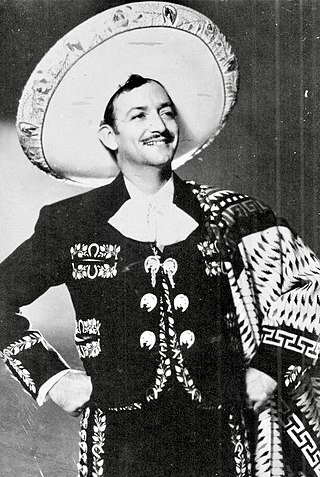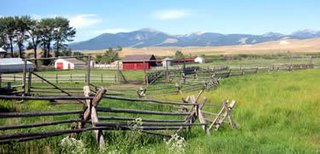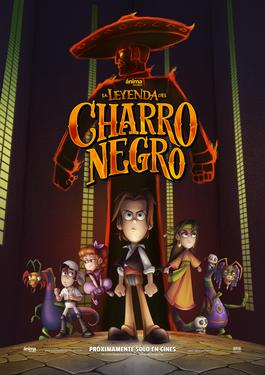
The vaquero is a horse-mounted livestock herder of a tradition that has its roots in the Iberian Peninsula and extensively developed in Mexico from a methodology brought to the Americas from Spain. The vaquero became the foundation for the North American cowboy, in Northern Mexico, Southwestern United States, and Western Canada.

Mariachi is an ensemble of musicians that typically play ranchera, the regional Mexican music dating back to at least the 18th century, evolving over time in the countryside of various regions of western Mexico. The usual mariachi group today consists of as many as eight violins, two trumpets and at least one guitar, including a high-pitched vihuela and an acoustic bass guitar called a guitarrón, and all players taking turns singing lead and doing backup vocals.

Charro, in Mexico, is historically the horseman from the countryside, the Ranchero, who worked on the haciendas and rural areas performing all his tasks on horseback, working as vaqueros and caporales, among other jobs. He was renowned for his superb horsemanship, for his skill in handling the lasso, and for his unique costume designed especially for horseback riding. Today, this name is given to someone who practices charreada, considered the national sport of Mexico which maintains traditional rules and regulations in effect from colonial times up to the Mexican Revolution.

Jarabe Tapatío, often referred to as the Mexican hat dance, is the national dance of Mexico. It originated as a courtship dance in Guadalajara, Jalisco, during the 19th century, although its elements can be traced back to the Spanish zambra and jarabe gitano, which were popular during the times of the viceroyalty. Female dancers traditionally wear a china poblana outfit, while the male dancers dress as charros, and their steps are characterized by flirtatiously stepping around the brim of their partner's hat.

Charrería is a sport and discipline arising from equestrian activities and livestock traditions used in the haciendas of old Mexico.

Charro! is a 1969 American Western film starring Elvis Presley, shot on location at Apacheland Movie Ranch and Old Tucson Studios in Arizona. This was Presley's only film in which he did not sing on-screen; the film featured no songs at all other than the main title theme, which was played over the opening credits. It was also the only movie in which Presley wore a beard. The film was novelized by Harry Whittington.

Jorge Alberto Negrete Moreno was a Mexican singer and actor.

Vicente Fernández Gómez was a Mexican ranchera singer, actor and film producer. Nicknamed "Chente", "El Charro de Huentitán", "El Ídolo de México", and "El Rey de la Música Ranchera", Fernández started his career as a busker, and went on to become a cultural icon, having recorded more than 100 albums and contributing to more than 30 films. His repertoire consisted of rancheras and other Mexican classics such as waltzes.

Talpa de Allende is a city and municipality in Jalisco, Mexico. Surrounded by pine-covered mountains, Talpa de Allende is a silver mining town founded by the Spanish in 1599. The name "Allende" is in honor of General Ignacio Allende.

Federico Arturo Guízar Tolentino, known professionally as Tito Guízar, was a Mexican singer and actor. Along with Dolores del Río, Ramón Novarro and Lupe Vélez, as well as José Mojica, Guízar was among the few Mexicans who made history in the early years of Hollywood.

Plaza Garibaldi is located in monumental downtown, Mexico City, on Eje Central between historic Calle República de Honduras and Calle República de Peru, a few blocks north of the Palacio de Bellas Artes. The original name of this plaza was Plaza Santa Cecilia, but in 1920, at the conclusion of the Mexican Revolution, it was renamed in honor of Lt. Col. Peppino Garibaldi, who joined with the Maderistas in the attack on Casas Grandes, Chihuahua, during the Revolution. The Garibaldi Metro station is named after this plaza.

Huejúcar is a town and municipality, in Jalisco in central-western Mexico. The municipality covers an area of 309.2 km2.

There are extensive and varied beliefs in ghosts in Mexican culture. In Mexico, the beliefs of the Maya, Nahua, Purépecha; and other indigenous groups in a supernatural world has survived and evolved, combined with the Catholic beliefs of the Spanish. The Day of the Dead incorporates pre-Columbian beliefs with Christian elements. Mexican literature and cinema include many stories of ghosts interacting with the living.

A ranch is an area of land, including various structures, given primarily to ranching, the practice of raising grazing livestock such as cattle and sheep. It is a subtype of farm. These terms are most often applied to livestock-raising operations in Mexico, the Western United States and Western Canada, though there are ranches in other areas. People who own or operate a ranch are called ranchers, cattlemen, or stockgrowers. Ranching is also a method used to raise less common livestock such as horses, elk, American bison, ostrich, emu, and alpaca.
"¡Ay, Jalisco, no te rajes!" or in English Jalisco, don't back down is a Mexican ranchera song composed by Manuel Esperón with lyrics by Ernesto Cortázar Sr. It was written in 1941 and featured in the 1941 Mexican film ¡Ay Jalisco, no te rajes!, after which it became an enormous hit in Mexico. The melody of the song was used for the title song of the Disney film The Three Caballeros. Both songs have been recorded by many artists.
Felipe Gil, also known by his nickname El Charro was a Mexican singer and songwriter of the Golden Age of Mexican cinema. He was born in Misantla, Veracruz, in 1913, into a family of musicians and he studied the music of the area. He worked for a time with Álvaro Ancona and in 1936 they were joined by Jesús "Chucho" Navarro, forming the group El Charro Gil y Sus Caporales. In 1940 Ancona was replaced by Felipe's brother Alfredo Gil. They disbanded in 1944, when Chucho Navarro and Alfredo Gil left the group to form the Trío Los Panchos with Hernando Avilés.

The Charros de Jalisco are a professional baseball team who compete in both the Mexican Pacific League (LMP) and the Mexican League (LMB), based in Zapopan, Jalisco, in the Guadalajara metropolitan area. Their home ballpark is Estadio Panamericano, which has a capacity of 16,500 people.

Legend Quest: The Legend of the Black Charro is a 2018 Mexican 2D animated action-horror-comedy film, produced by Ánima Estudios.
¡Ay, Jalisco, no te rajes! is a 1941 Mexican film directed by Joselito Rodríguez, starring Jorge Negrete, Gloria Marín and Carlos López. It is the prequel to El Ametralladora, starring Pedro Infante in the role as Salvador Pérez Gómez 'El Ametralladora'. It is based on the book ¡Ay, Jalisco, no te rajes! by Aurelio Robles Castillo. Evita Muñoz was five years old when she played the character Chachita in the film, and also earning her the nickname she was known by for the length of her career. It was released at the Cine Olimpia on November 12, 1941.

The Mariachis de Guadalajara were a professional baseball team in the Mexican League based in Zapopan, Jalisco, in the Guadalajara metropolitan area. Their home ballpark was the Estadio Panamericano, with a capacity of 16,500 people. The Mariachis were established in December 2020 and started playing in the 2021 season.
















